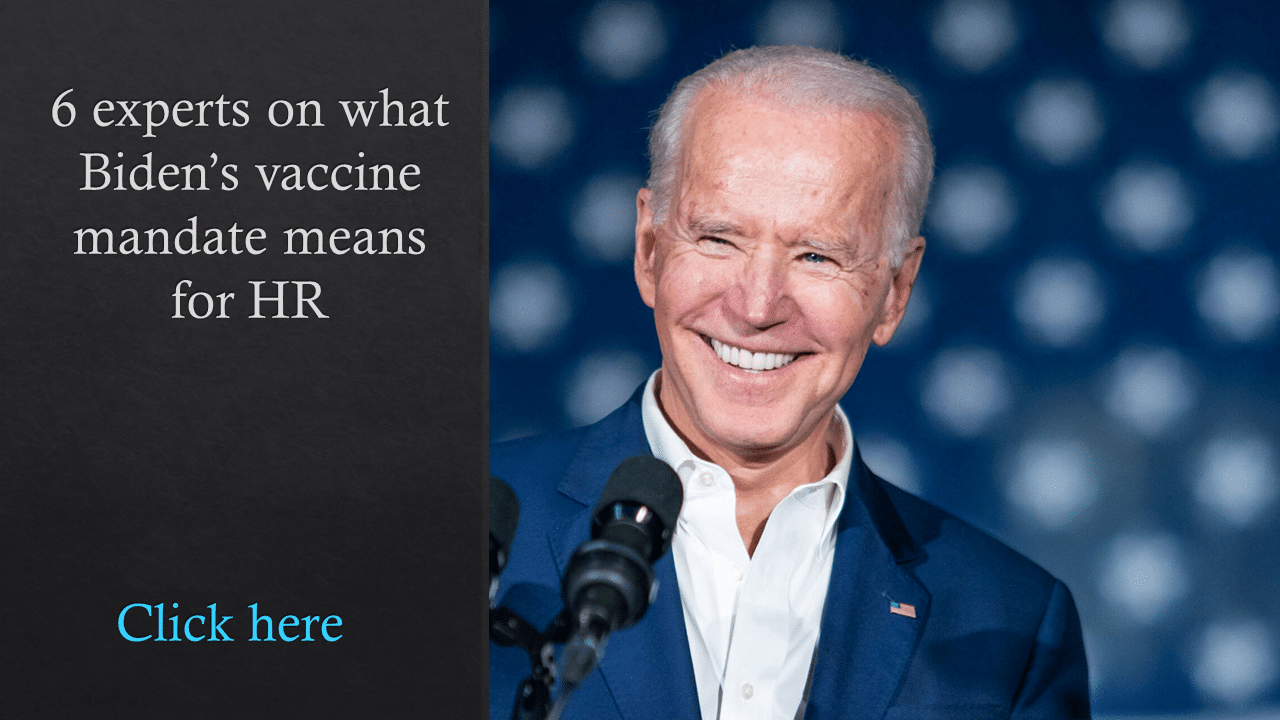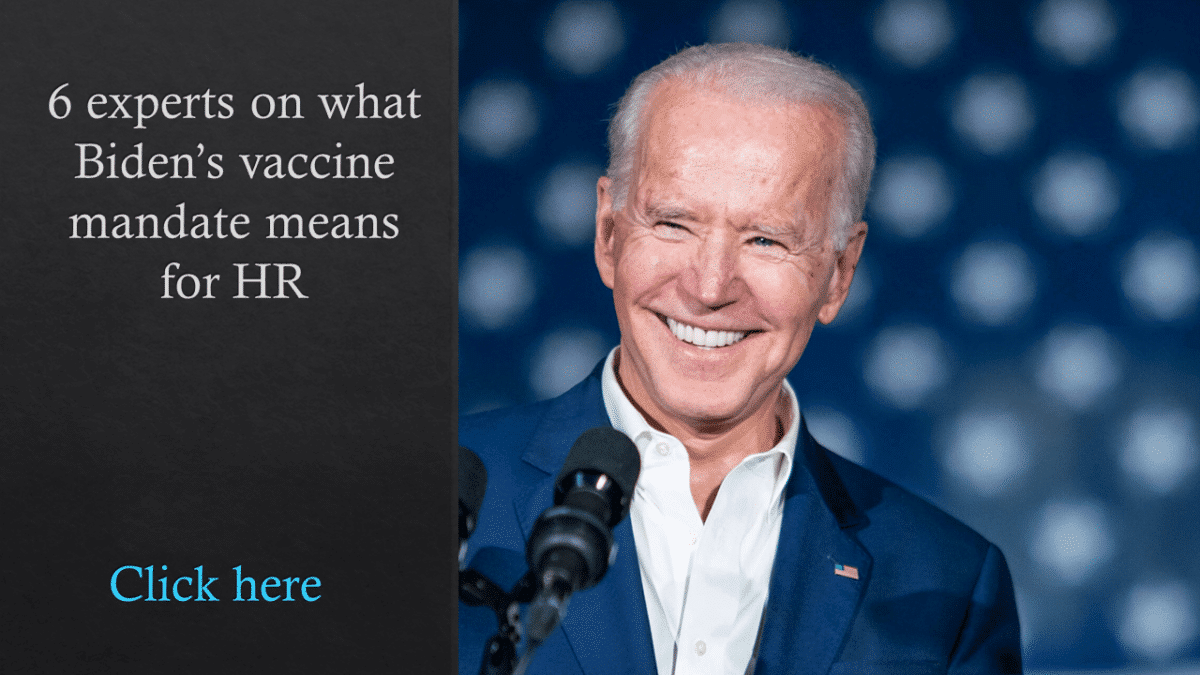Nearly two years into the COVID-19 pandemic, 2021 has been another year that has tested both employees and employers in spades. The emergence of the COVID vaccines (and the issues that surround vaccine policies), declining employee mental health, safety concerns, work/life balance issues and more have undoubtedly challenged HR and benefits leaders. But along with those obstacles, bright spots have emerged: innovative solutions, more authentic relationships between leaders and their teams, and improved communication around benefits.
From a sharper focus on mental health to new perks that help employees, here are five of the biggest benefit trends of the year.
Mental health. After navigating the COVID-19 pandemic and all its uncertainties, it’s no surprise that employee mental health took a big hit this year. Rates of depression, anxiety, stress and burnout all continued to rise in 2021. The good news is that more employers took the issue seriously, with many stepping up to help through expanded programs, mental health days and digital tools. Not only that, but mental wellness became part of the workplace conversation, with an increasing number of leaders encouraging employees to be open about struggles, and even sharing their own challenges and ideas for self-care.
I rarely spoke to an HR or benefits leader this year who wasn’t eager to talk about the importance of mental health, why it’s vital to help workers and why they hope the conversation has changed forever. “It’s about the recognition that we care about this, that we are putting programs in place to encourage mental health and wellness,” Tara Ataya, chief people and diversity officer at Hootsuite, told me recently. “I think it’s really important for organizations to lean into their people and recognize the responsibility that we have.”
Related: Burnout is soaring. Here are 7 ways employers can help
 COVID-19 vaccines. 2021 was certainly the year of the COVID vaccine: First, the shots became available, with employers helping employees secure appointments to get vaccinated and giving them paid time off to get the shot and recover from side effects. Then, it became about vaccine reluctance among certain populations, and employers encouraging the vaccines through education campaigns, incentives and more in hopes of having a healthier employee population and safer operations.
COVID-19 vaccines. 2021 was certainly the year of the COVID vaccine: First, the shots became available, with employers helping employees secure appointments to get vaccinated and giving them paid time off to get the shot and recover from side effects. Then, it became about vaccine reluctance among certain populations, and employers encouraging the vaccines through education campaigns, incentives and more in hopes of having a healthier employee population and safer operations.
Then, waning vaccine rates and the emergence of the Delta variant—which surged across the country in late summer—changed the game again, with scores of employers turning to vaccine mandates for employees. Of course, mandates became an even bigger part of the conversation with President Biden’s requirement that employers with 100 or more workers implement a COVID-19 vaccination requirement for their workers or offer a weekly testing alternative to those who refuse or are unable to receive a vaccine. (The mandate has since been tied up in court, and the Department of Labor’s Occupational Safety and Health Administration now says it is suspending enforcement of the Biden administration’s employer vaccine rule).
Vaccines have become one of employers’ biggest jobs, and challenges, of the year. But it’s not surprising that the job has fallen on HR and benefits leaders, as they are often tasked with keeping employees safe and healthy. Of course, this will only continue in the new year.
Related: COVID booster shots are here. What should employers do?
Socially conscious benefits. The social awakening and nationwide protests that helped define 2020 continued into 2021, with many benefit and HR leaders driving positive change within their own organizations from a benefits perspective. More employers this year, for instance, recognized Juneteenth as a company holiday, a major step in the movement. Companies including Best Buy, National Grid and the Hartford gave employees Juneteenth as a paid day off this year in recognition of the end of slavery in the United States. Company leaders say observing Juneteenth as a holiday—many for the first time—is important recognition of systemic racism and a chance for employees to reflect. It offers “something tangible to those efforts and raises the significance of the date to the same level as other paid holidays,” says Julie Stich, vice president of content at the International Foundation of Employee Benefit Plans. “It’s a way for companies to show action within their DEI initiatives.”
 Innovative solutions. Besides the regular arsenal of benefit choices, employers have been getting more creative to help employees during COVID-19. It’s a trend that began in 2020 with benefits like emergency time off and online tutoring for employees’ kids, and it continued this year. Of note was the collective time off trend—when companies shut down operations for a week to give employees a break all at once. Employers like Momentive, Hootsuite, Mailchimp, Podium and LinkedIn turned to collective time off in an effort to alleviate employee stress and take aim at burnout, which is plaguing workers—and employers—all over the nation. Those employers closed down for a week, while others including SAP and Thomson Reuters embraced companywide mental health days. “From an HR or benefits standpoint, you’re trying to maximize the return on investment that you give to your people,” Katie Morrow, Podium’s senior director of people operations, said earlier this year. “It feels like, for everybody, there’s a collective sense of relief and energy that comes back when they return.”
Innovative solutions. Besides the regular arsenal of benefit choices, employers have been getting more creative to help employees during COVID-19. It’s a trend that began in 2020 with benefits like emergency time off and online tutoring for employees’ kids, and it continued this year. Of note was the collective time off trend—when companies shut down operations for a week to give employees a break all at once. Employers like Momentive, Hootsuite, Mailchimp, Podium and LinkedIn turned to collective time off in an effort to alleviate employee stress and take aim at burnout, which is plaguing workers—and employers—all over the nation. Those employers closed down for a week, while others including SAP and Thomson Reuters embraced companywide mental health days. “From an HR or benefits standpoint, you’re trying to maximize the return on investment that you give to your people,” Katie Morrow, Podium’s senior director of people operations, said earlier this year. “It feels like, for everybody, there’s a collective sense of relief and energy that comes back when they return.”
Related: One of the ‘very best’ new ways to combat employee burnout
Enhanced communication. As employers stepped up with offerings—caregiving, mental health programs and more time off among them—as a result of the pandemic, it became clear that employees needed to be made aware of those benefits. Historically, employees aren’t as tuned in to what is available to them as employers think—or hope—they are.
But the pandemic—and remote work—have demanded a new expectation for employer-employee communication. It’s clear that workers need and want to hear from employers. That includes not just communication about available benefits—industry experts say it’s imperative that employees are not only aware of offerings, but regularly encouraged to access and use them—but also receive regular communication about employer strategies and plans. During times of crisis, conflict and confusion, it’s apparent that employees need employers more than ever. And employers should deliver.
